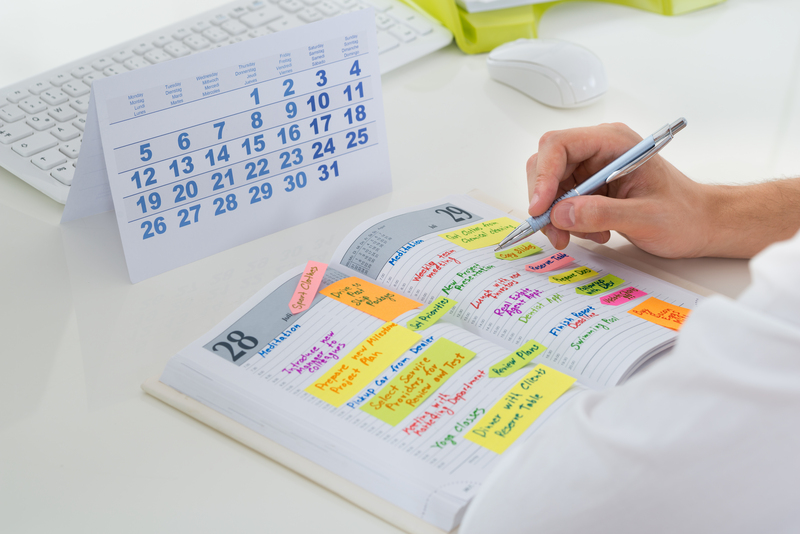Heavy Harmony: Professional vs DIY Piano Moving Weigh-In
Posted on 30/05/2025
Heavy Harmony: Professional vs DIY Piano Moving Weigh-In
Moving a piano is a harmonious dance of strength, technique, and expertise. Whether you're relocating a grand piano to your new home or shifting an upright piano to another room, the dilemma remains: Should you entrust your prized possession to professional piano movers, or is it better (and cheaper) to embark on a DIY piano moving adventure? This comprehensive guide delves deep into the pros, cons, risks, costs, and strategies, providing you with all the notes you need to make a well-tuned decision.

Understanding the Unique Challenges of Piano Moving
Pianos are more than just heavy furniture. These majestic instruments are intricate machines composed of thousands of parts, including delicate strings, hammers, a responsive soundboard, and complex mechanical action. The average upright piano weighs between 300 and 500 pounds, while grand pianos can tip the scales at a staggering 1,200 pounds or more. More than weight, it's their unusual shape and finely tuned mechanics that make moving them a nuanced endeavor.
- Size Matters: Even the slimmest upright piano is bulky and awkward.
- Delicate Components: Vibrations, bumps, or improper angling can throw off the piano's tune or cause irreparable harm.
- Expense: Pianos are a significant investment, both financially and sentimentally.
Given these challenges, the question arises: Should you call in the professionals or roll up your sleeves for a DIY attempt?
Professional Piano Movers: The Benefits of Experience
Specialized Training & Equipment
Professional piano movers are specially trained to move pianos of all types and sizes. This training includes learning the correct lifting techniques, disassembling and reassembling pianos, and securing the instrument for transportation.
- Piano Moving Dolly: Unlike a standard furniture dolly, these are designed to support a piano's weight and shape.
- Padding and Straps: Movers use heavy-duty padding to prevent scratches and professional-grade straps to anchor the piano securely during transit.
- Ramps and Boards: For navigating stairs and uneven surfaces "in harmony."
Liability & Insurance
One of the significant advantages of using a piano moving service is insurance. Professional movers carry insurance that covers accidental damage--protecting both your instrument and your property. Should an accident occur, the burden of repair or replacement won't fall on your shoulders.
Proper Transportation Vehicles
Professional moving companies use specialized vehicles equipped with climate control and custom tie-downs, ensuring that your instrument arrives in tune and intact. This is especially crucial for long-distance or interstate piano transport.
Efficiency and Peace of Mind
- Time-Saving: Professionals can usually move a piano in less time and with fewer risks than untrained individuals.
- Safety: Eliminates the risk of personal injury, which can occur when attempting to move heavy objects without the right techniques.
- Problem-Solving: Experienced movers can anticipate issues involved with tight spaces, stairs, and awkward entrances.
The Potential Drawbacks
- Cost: Hiring piano movers is generally more expensive than doing it yourself. The national average ranges from $150 to $600 depending on move complexity and distance.
- Scheduling: You may need to work around the mover's calendar.
- Less Control: You'll need to trust your instrument in another's hands.
DIY Piano Moving: Is It a Risk Worth Taking?
The Allure of Saving Money
For many, the primary reason to move a piano yourself is economic. You might have a tight budget, or maybe it's a short, simple move. YouTube tutorials and online forums often give it a "can do" feeling.
- Cost Savings: No labor costs, and you can rent a truck and equipment as needed.
- Convenience: You control the schedule and who helps you.
- Personal Touch: Peace of mind handling your own instrument (if you are skilled).
The Risks and Realities of DIY Piano Moving
- Injury Risk: Strains, sprains, back injuries, and even broken bones are common among untrained movers.
- Piano Damage: Internal mechanisms can be damaged by vibration or mishandling, leading to expensive repairs or a ruined instrument.
- Property Damage: Walls, door jambs, floors, and even stair railings can suffer inexpert damage.
- Lack of Insurance: Your homeowner's policy likely won't cover damage incurred by DIY moving.
- Equipment Rental Fees: You will need to rent or purchase moving pads, dollies, straps, and possibly a ramp or lift.
The Logistics of DIY Piano Moving
Be prepared for a multi-step process:
- Assess the Route: Measure doorways, hallways, and stairs. Ensure plenty of clearance.
- Enlist Help: You'll need at least 3-4 strong, physically-capable people.
- Gather Equipment: Rent or borrow a piano dolly, moving straps, thick padding/blankets, and a suitable moving truck.
- Prepare the Piano: Close and secure the keyboard lid and any removable parts. Wrap the instrument securely in padding.
- Execute the Move: Lift with your legs, maintain communication, and take frequent breaks. Move slowly, especially on stairs and sharp corners.
- Transport with Care: Anchor the piano inside the truck with heavy-duty straps to keep it from shifting.
- Re-Set and Tune: Once in place, let the piano acclimate for a few days before getting it professionally tuned.
Failure to thoroughly plan increases the risk of costly accidents--or even personal injury.
Key Factors in the Heavy Harmony Decision
1. Piano Type & Value
Grand pianos and concert grands are infinitely more complicated and valuable than most uprights, requiring more skill and specialized tools to move. If your piano is an antique or has high sentimental (or resale) value, professional piano moving services are strongly advised.
2. Distance & Destination Complexity
Are you just moving the piano across your living room, or across the country? Multi-story moves, tight hallways, steep staircases, and sharp turns add significant challenge--for DIY and pros alike.
3. Your Skills & Resources
Do you already have experience moving heavy, awkward objects? Do you know at least 2-3 other capable helpers? Do you have access to the necessary equipment? If not, consider the learning curve and risk involved.
4. Insurance & Risk Tolerance
Can you afford to repair or replace the piano if something goes wrong? How about repairs to your home? Professional piano movers provide a safety net through liability insurance.
5. Time Constraints
Professional piano moving is generally faster, and you avoid the time spent planning, rounding up friends, and recovering from the exertion of a heavy lift.
Piano Moving Cost Breakdown
Hiring Professional Piano Movers
- Local Moves (under 50 miles): $150-$350
- Long-Distance Moves: $500-$2,000 (varies by distance and piano size)
- Prepping, Disassembly, and Tuning: Some services include this in their fees, others charge extra
DIY Piano Moving Costs
- Truck Rental: $60-$150
- Equipment Rental (dollies, blankets, straps): $50-$100
- Labor (pizza and thank-yous for friends): Variable
- Possible Damages: Can exceed the cost of hiring a pro if accidents occur
Real World Scenarios: When to DIY and When to Hire Pros
-
DIY Moving Works Best When:
- Piano is a smaller upright (not a grand or antique)
- Distance is minimal (same floor or very few stairs)
- You have sufficient help and experience
- You own or can rent the right equipment
- You're willing to accept the risk of potential damage
-
Professional Piano Movers Are Advisable When:
- Piano is a grand, antique, or extremely valuable
- You're moving long-distance or to/from challenging locations
- No experienced helpers available
- Multiple stairs, elevators, or tight spaces involved
- The peace of mind of insurance and expertise outweighs the savings of DIY
Piano Moving Safety Best Practices
Before the Move
- Measure all doorways and clear pathways in advance
- Remove loose items and secure moving obstacles
- Communicate your plan with all helpers or movers
- Check weather forecasts if moving between buildings
During the Move
- Always lift with your legs, never your back
- Keep the piano in a vertical position to avoid damage
- Take slow, deliberate steps--never rush
- Use ramps or lift gates for stairs whenever possible
- Communicate constantly to ensure team coordination
After the Move
- Allow the piano to acclimate before tuning
- Inspect for any damage immediately
- Contact your tuner for potential re-voicing or repairs

FAQ: Heavy Harmony in Piano Moving
How should I prepare my home for professional piano movers?
Clear all pathways, remove rugs, ensure the movers have plenty of access, and communicate about any tricky spots in advance.
How often will my piano need tuning after a move?
Most pianos need tuning within a week or two of relocation, as environmental changes affect the pitch and tension. A professional piano moving service may include a tuning session in their package.
What's the biggest danger in DIY piano moving?
The risk of serious bodily injury--back injuries and crushed fingers are common among amateur movers.
Does moving a piano by yourself affect its value?
Potentially, yes. Visible damage and internal issues from improper moving can lower your instrument's resale or sentimental value.
Are there pianos that should never be moved without professionals?
Yes--concert grands, antique pianos, and player pianos should always be moved by professional piano moving experts.
Conclusion: Achieving Heavy Harmony in Your Piano Move
Whether you march to the beat of DIY determination or the reliable rhythm of professional piano movers, the decision deserves prescient planning, honest self-assessment, and a clear measure of what you're willing to risk for your instrument's safety and your own well-being.
If your piano is dear to you, investing in professional piano moving services will provide the proper harmony of skill, safety, and peace of mind. For smaller, lower-value pianos or short, obstacle-free moves, weighed caution and thorough preparation may allow a successful DIY move.
In every case, strive for harmony--between your budget, your back, and the priceless resonance of a cherished piano, well moved and well loved.



